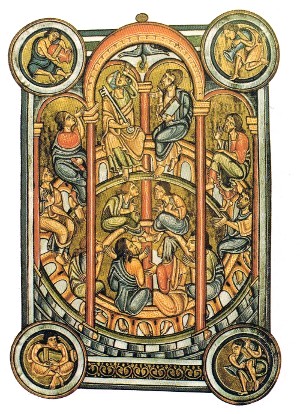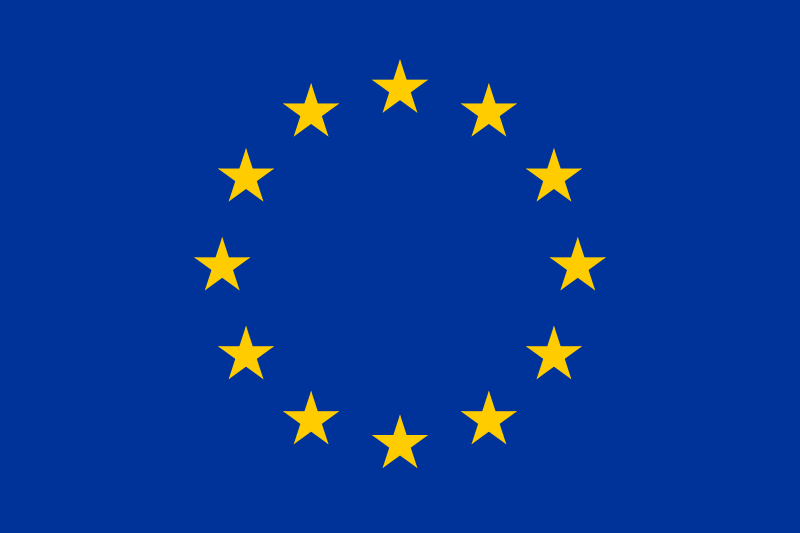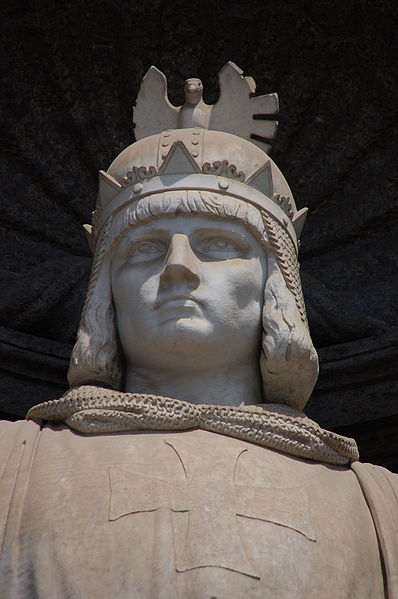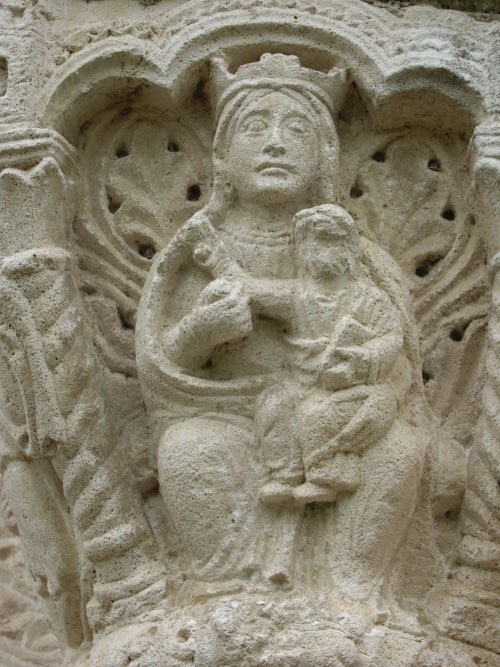-
The General Chapter,
where the Holy Spirit blows 
- When the time for Pentecost was fulfilled, they were all in one place together. And suddenly there came from the sky a noise like a strong driving wind, and it filled the entire house in which they were. Then there appeared to them tongues as of fire, which parted and came to rest on each one of them. And they were all filled with the Holy Spirit and began to speak in different tongues, as the Spirit enabled them to proclaim.
- Acts of the Apostles 2,1-2,4
A model : the General Chapter of Cîteaux
The Knights Templar General Chapter was created on the model of the Cistercian's General Chapter. The Cistercian institutions and the structure of the order had been set in 1114 with the Charter of Charity written by the Englishman Stephen Harding, third abbot of Cîteaux.
The spirit of The Charter is to allow as much autonomy as possible to the monasteries – as well for the election of their abbot as for their financial management . This concern to give freedom and independence to a community of men was driven by the will to link the monasteries to each other by solid bonds through a « pact of friendship », love and charity – and not according to a hierarchically organized system with strict and permanent rules of subordination. In other words : a true miracle in a Carolingian society where everyone pictured himself as subject to the feudal lord. The Gregorian Pope Callixtus II approved the Charter of Charity with the papal bull Ad hoc in Apostolici on December 23, 1119.
In return for this recovered freedom, the Charter of Charity stipulates the obligation of attending the yearly meeting of all the abbots in the mother house of Cîteaux. This reunion, called General Chapter, takes all important decisions concerning the order and sanctions all breaching of the Rule. Each abbot can participate in the deliberations with the same rights and everyone must comply in the same way to the decisions of the Chapter.
Moreover, the abbots of the four first daughters houses of Cîteaux – La Ferté, Pontigny, La Claire Vallée and Morimond – are in charge of enforcing the observance of the rule within the mother house of the order. If the abbot of the mother house ever strays from the rule, they must call him to order, and may, in extreme cases decide of his deposition. Entitled to dismiss the abbot of the mother house, the General Chapter is the highest authority of the order, higher even than the abbot of Cîteaux himself.

The internal organization of the General Chapter was organized around its five main branches : Cîteaux and its first four daughter houses. Each in turn opened new subsidiary abbeys, taking the lead of their own branch. Very soon, some of these branches identified themselves according to one of the political currents crossing the feudal society. These branches interacted within the General Chapter like the parliamentary groups within an Assembly – very much like in the European parliament today. The Cistercian legislation specifies that all monasteries « must be founded and dedicated to the memory of the queen of heaven and earth, Holy Mary». (Capitula IX). In his Sermon of the Twelve Stars he reminds us that « what is conceived in her is from the Holy Spirit » (Matthew I,20). These twelve stars of Mary can be noticed on the European Flag, symbol of the European Union.

Of course, considering the stakes of the decisions taken by the General Chapter, the debates were sometimes very lively, at the limit of overstepping the rules of fraternal respect between the abbots and many of them were punished for having spoken with too much impetuousness. The Cistercian monks didn't refrain from expressing their differences of opinion , and even the creation of the Templar Knights was a controversial issue within the Cistercian order. The Cistercian monk Isaac of Stella called the new knighthood "new monster" .
The Holy Spirit gusted through the assembly. When the pressure grew too high, the only solution left was the resignation of the father abbot. This happened in 1159 when Lambert, abbot of Cîteaux, supported the Anti-pope Victor IV – who was Emperor Barbarossa's protégé. Lambert was formerly the abbot of Morimond, at the head of the Cistercian branch which was the most Germanic-oriented, not to say the most conservative of the General Chapter. The abbots of Claire Vallée and Pontigny demanded his resignation which they obtained in 1161. The Cistercian order stayed on the look-out, and leaped in to defend the Gregorian Pope Alexander III (1159-1181).
In spite of all the disciplinary precautions taken, the General Chapter, which was held in Latin, remained quite a mind-blowing place. The diversity of opinions displayed within a same monastic order could be quite disconcerting. In 1202, concerning the conduct of the fourth crusade, some Cistercians took position for the conquest of Byzantine Lands while others were absolutely against. This division within the order will be very harmful for the unity within the Frank army.
United under the white mantle
With the duty of confidentiality of a military order, the Knights Templar gave the image of a stronger internal coherence. The deliberations were strictly confidential and this obligation of secrecy was a very touchy matter for the Templar Knights.
However, behind the facade of unity, the Templar order was bound to share the democratic vocation which prevailed at the creation of the General Chapter. Within the order of the Knights Templar, we will see a struggle for influence amongst the different currents of the order which mustn't have been very far form what happened in Cîteaux.

, © Copyright John Salmon and licensed for reuse under this Creative Commons Licence
The General Chapter was a horizontal organization, and not a pyramidal one. The organization of the General Chapter was always prepared with great care, and also some apprehension, by the Grand Master of the Knights Templar. His fears were apparently justified since the history of the order records the resignation of several Grand Masters under the pressure of the General Chapter.
This happened namely to Grand Master Everard des Barres (1149-1152), judged too close to the King of France Louis VII and considered responsible for the failures of the Second Crusade.
This also happened to Grand Master Renaud de Vichiers (1250-1252), dismissed after his misadventures with the King of France Saint Louis (see our article on the Secret Statutes of the Knights Templar).
A woman clothed with the sun, and the moon under her feet
The task of the Grand Masters of the Knights Templar became even more difficult after the decision of opening a new front in Spain. It is probably under the pressure of the Gregorian Church that the Templars ended up accepting what seemed at first pure folly. The opening of a front in the West literally split the order in two. The preamble of the agreement signed on November 27, 1143 at the provincial council of Girona is clear enough :
« In order to defend the Western Church in Spain, to harass, fight and expulse the race of the Moors, to exalt the holy faith and Christian religion, I (Ramon Berenguer IV, Count of Barcelona and King of Aragon) have decided that a knighthood shall be established, on the model of the knighthood of the Temple of Salomon which is in Jerusalem and defends the eastern Church. »

This preliminary distinction between Eastern Church and Western Church, between sunrise and sunset, between day and night – and, to go further, between the sun and the moon - will leave its mark on the institutions of the order. A priori, everything separated the Templars of the West from those of the East.
In the East, the Knights Templar spoke French – also called « langue d'oïl » - within the General Chapter located on the ancient site of Salomon's Temple in Jerusalem. Save for Latin, which was the prerogative of the clerics, French was the international language of the Middle Ages . The « langue d'oïl » was spoken in most Latin States of the East as well as in France and in England. The Templars Rule, first written in Latin, was very soon translated in French for a better understanding of its content. On the western front, in the Monzon fortress in Aragon, where the Templar knights took the habit of holding chapter, the Templars spoke not the « langue d'oïl » but the « langue d'oc » of the south of Europe.

photo de Llibredelsfeyts, licence Creative Commons Attribution-Share Alike 3.0 Unported
Above all, the Templars of the North of Europe fighting in the Holy Land remained under the influence of the Cistercians of the Strict Observance whereas those on the Spanish front were more sensitive to the spirituality of the Canons Regular, a movement resolutely engaged in the reconquest of the souls in Spain.
Moreover, the Marquis d'Albon's study on the charters brings out that half of the donations given to the order between 1119 and 1150 came from the territories of Provence and Languedoc. This means that the province of Aragon , also sometimes called Provence and Part of Spain, represented as much as the six other provinces put together. The financial and political importance of this province on the institutions of the order will weigh decisively on the destiny of the Templar Knights.
A statu quo was observed between the French and Occitan sides of the Knights Templar during most of the XIIth century – each dealing with its respective front. But the terrible defeat of Hattin (1187), followed by the fall of the first Latin Kingdom of Jerusalem, led to a new state of play. The King of England, Richard I the Lionheart (1157-1199), who was busy organizing the Third Crusade, brought all his influence to involve the Occitan and Provençal Templars in the reconquest of the second kingdom of Jerusalem. From then on, the atmosphere became strained within the General Chapter, newly settled in the harbor of Saint-Jean d'Acre.
The different political currents within the Knights Templar
Stemming from the Gregorian reform, The Knights Templar's order was in its origins a questioning of the established traditions. It is beyond all dispute that the first Latin States in the Holy Land were a challenge to the customs of the declining feudal Carolingian civilization.
But within this movement for reform coexisted two distinct currents. There was the movement of the Canons Regular of the Holy Sepulcher of Jerusalem, following the Rule of Saint Augustine, who were supported by the lower class and were represented in Jerusalem by its Patriarch. The Patriarch defended thoroughly the principles of the Respublica Christiana. Face to this hard-line Gregorian Church, the Hierosolymitan knights aimed only for the right to elect their king and, if possible, to participate in his decisions. These noblemen looked for the build tools of their new governance in the Benedictine Rule of the Strict Observance .
These two currents reappear within the order of the Knights Templar, each branch having a characteristic sociological type: the Templars from the North of France and from England, who spoke the “langue d'oïl”, endorsed the democratic principles of the Strict Observance; whereas the southern Templars promoted the spirit of the Res Publica of the Western church. They also introduced the figure called “Baphomet” within the Knights Templar's most sacred institution: the General Chapter.
A third current ran alongside these two main streams: the Germanic branch. It was the conservative party of the order, and had for main goal to restore the aura of the Holy Roman Emperor in the eyes of the Knights Templar. This party always stayed a minority and all their attempts to impose a Germanic Emperor at the head of the Latin States in the Holy Land failed. In 1229, the Holy Roman Emperor Frederick II of Hohenstaufen tried to impose himself as King of Jerusalem, going as far as putting the crown of Jerusalem on his head himself, thus revealing his true motivations. He had not come to render his crown but to take possession of it.

The Templars replied to Frederick II's arrogant and conceited attitude - held only a few meters from the Valley of Josaphat - by a counter-crusade in his lands in Apulia and Sicily, driving him out of the Holy Land.
The Templars who remained faithful to the Holy Roman Emperor are the ones who ended up introducing the secret statutes within the militia.
Amongst the different groups of influence in the General Chapter the Templars, let us not forget the Templars in favour of the Capetian dynasty. Even within the Knights Templar, their was a royalist current – to which the Grand Master Evrard des Barres probably belonged.
All these currents , and a few others, composed a great mosaic called “the General Chapter” of the Knights Templar.
Grand Master, a true calling
The Grand Master of the Templars had to be a skilled strategist and a talented diplomat to handle the huge and complex machinery of such an order. Some managed with success, others not. The correspondence between the Grand Masters and the Holy See brings out the difficulties they encountered in the fulfillment of their task.
During the General Chapter held in Saint-Jean d'Acre in 1202, the Grand Master Philippe du Plessis (1201-1209) was faced to a rebellion of dignitaries who wanted to depart from the order to enter Cîteaux – which was allowed by the Rule if the Grand Master granted them the permission. Philippe de Plessis refused to let them go, putting forward the reason that their demand was motivated “not by vocation for a contemplative life but by reasons of revolt”. The Grand Master's interdiction musn't have been taken with much consideration since the Pope Innocent III (1198-1216) addressedddd to the abbot of Cîteaux and to its General Chapter on July, 2, 1209 the bull Licet Quibusdam forbidding them to accept the Templar brothers.
The second Grand Master known to have been challenged in his leadership is Jacques of Molay himself. Many Templar dignitaries blamed him for what was at the very least a litigious election in Cyprus in 1292. Considering his presidency illegitimate, they refused to attend the General Chapter meeting in Montpellier on august, 9, 1293. Pope Boniface VIII's had to fulminate a bull addressed to the archbishops, bishops and other prelates to force the rebellious Templars to pledge allegiance to the Grand Master.
As we can see with these two exemples, managing the General Chapter of the Knights Templar was not a bed of roses and the monk-soldiers kept up the sense of rebellion so representative of the Benedictine spirit of the Strict Observance.
Most of the time we have only been given the chance to gaze at the surface of the Templars religion dedicated to the Virgin Mary, and we discover now, behind the army of white mantles, its hidden gem: the General Chapter.

By working on the coexistence of different points of view within a same space, the Templars were pioneers in their time and this quest remains forever to their praise. At risk of scandal, the brothers Templars even opened the doors of their chapter to other religions, and they were right to do so since the Holy Spirit blows beyond all borders. With their Cistercian brothers, they opened the way to laicity – a new perspective on the place of mankind in the world, in which we are linked to each other by a pact of friendship, love and charity – a relationship at the heart of the united space.
by Jean-Pierre SCHMIT

















